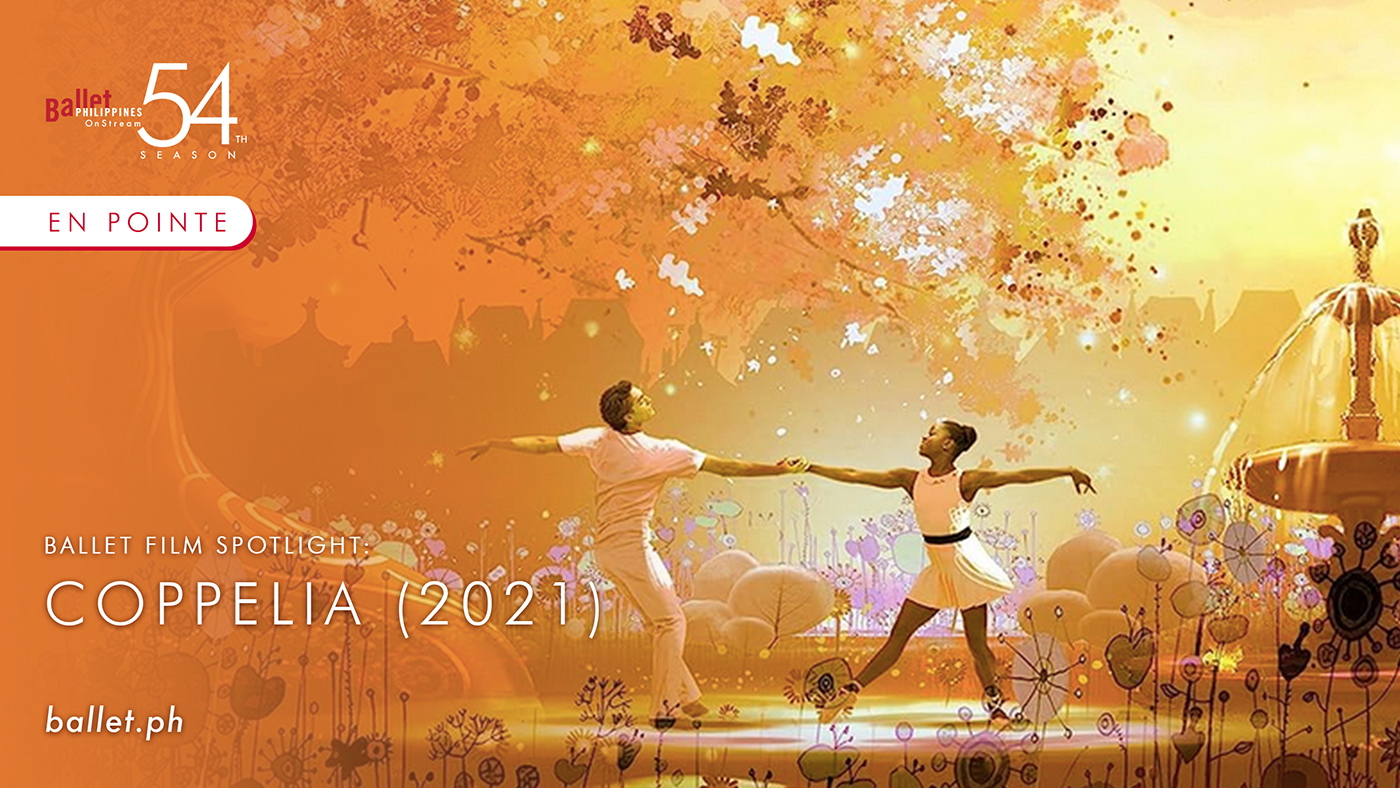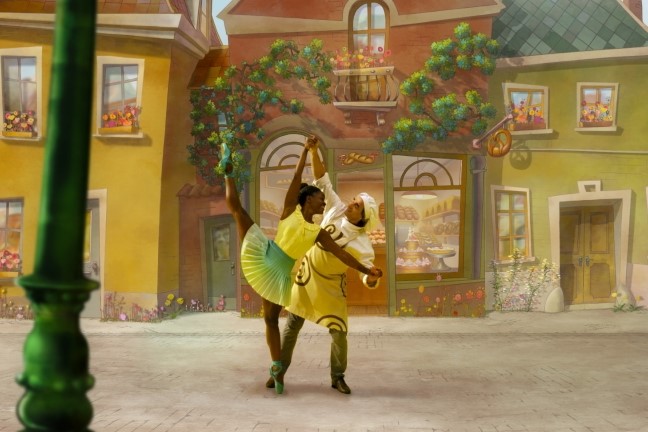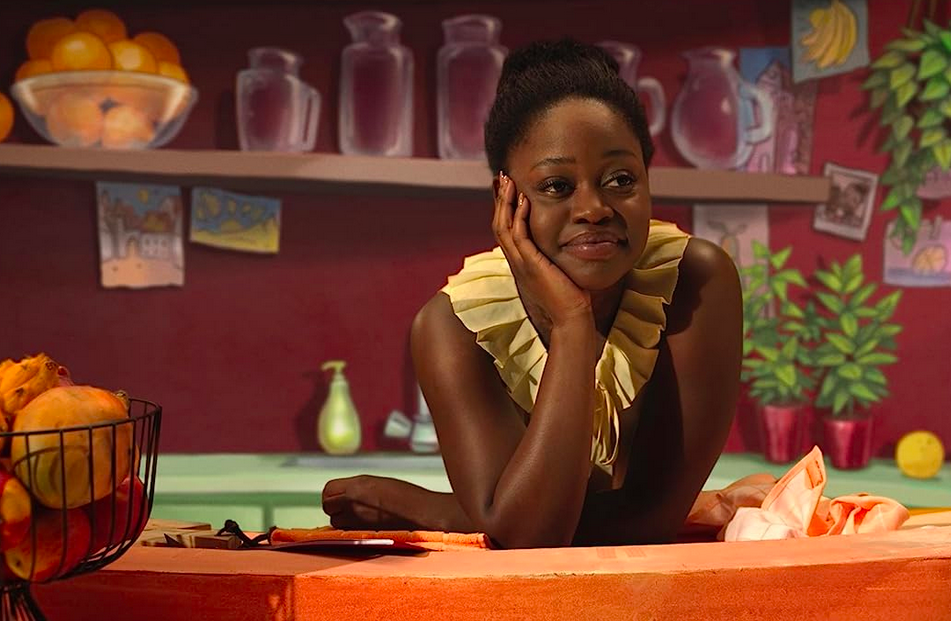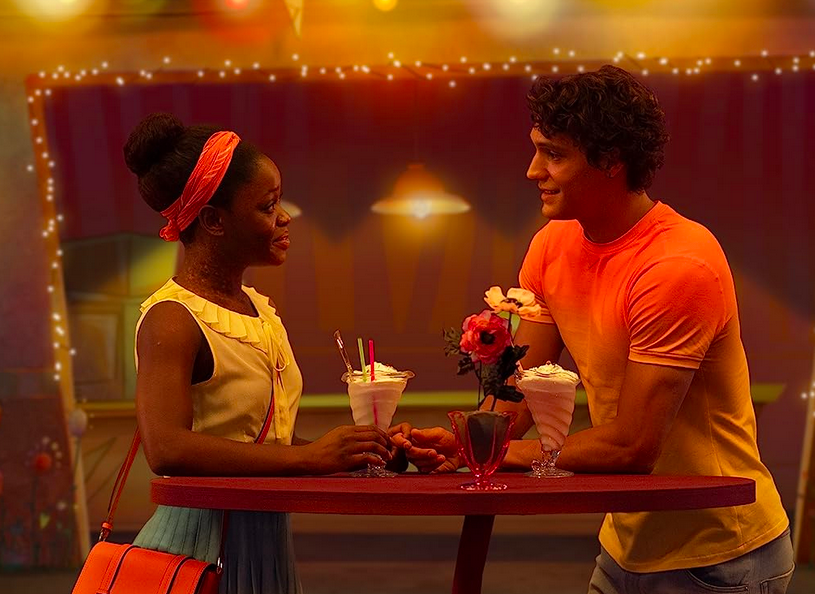The first film adaptation based on the iconic comic ballet by Léo Delibes was released two years ago without much fanfare. Despite making virtually zero money at the European box office, Coppelia managed to impress critics for its use of choreography, delightful color palette, and its modernization of the classic story by Charles-Louis-Étienne Nuitter. It also managed to win the Golden Punt for Best Fiction Feature at the 40th Cambridge Film Festival, where it premiered. As Ballet Philippines gears up for its 54th season (with Coppelia as the season-opener), we’ve decided to look into the underseen 2021 film.
The very basis of Nuitter’s libretto follows Dr. Coppélius, an inventor who creates a beautiful life-sized dancing doll named Coppelia to keep him company. A young villager named Franz soon becomes infatuated with the doll, setting his feelings aside for Swanhilda, his one true love. To win him back, Swanhilda dresses up as a doll, and ultimately saves him from the hands of the evil inventor. The film version, which is directed by Steve de Beul, Ben Tesseur, and Jeff Tudor, finds inspiration in the critically acclaimed 2008 Dutch National Ballet production choreographed by Ted Brandsen.
Taking cues from Brandsen’s modern interpretation, the directors updated the character of Dr. Coppélius from an inventor to a cosmetic surgeon, and Coppelia from a toy to a robot. This was an effort to highlight modern day issues such as superficial beauty, being one’s self, and the pressures of social media. Film critic Nikki Naughan of Screen International noted: “[This Coppelia] leans heavily into modern concerns of fabricated image and the corruption of beauty, while staying true to the original story.”
At the center of the film is a very talented cast of dancers. Sierra Leonean-American ballerina Michaela DePrince immortalizes her imitable talent on celluloid in the leading role of Swanhilda (now called Swan). DePrince is noted for being a multi-faceted individual, with careers in ballet, activism and writing. She currently dances as a second soloist for the Boston Ballet. In the male lead is Brazilian dancer Daniel Camargo, who plays Franz. The 31-year-old began his career at the Stuttgart Ballet in 2009, eventually working his way up as principal dancer in 2013. He now dances for the American Ballet Theatre. In supporting roles are Vito Mazzeo as Dr. Coppélius and Erica Horwood as the titular Coppelia.
Beyond the astonishing dancing and choreography, Coppelia features a strong production team. The three director’s vision has made this version of the ballet unique. The film has no dialogue and incorporates animated characters and sets with live-action dancers. There is always Maurizio Malaganini, the Emmy-nominated composer who wrote the film’s charming original score. Finally, we must mention cinematographer Tristan Oliver, who brings playfulness and brightness to his lensing. Oliver has an impressive resume that includes Isle of Dogs and Fantastic Mr. Fox, two critically acclaimed films by American auteur Wes Anderson.
Ultimately, 2021’s Coppelia recieved mixed reviews from both critics and fans who were surprised by the risky artistic decisions put into the production. Still, we consider it an interesting exercise on how ballets can be adapted for contemporary audiences. While it lacks the mastery of The Red Shoes and An American in Paris, Coppelia is still worth checking out for the filmmaker’s uncompromising vision. It is now available to rent or buy on Google Play, Apple TV, and YouTube.





